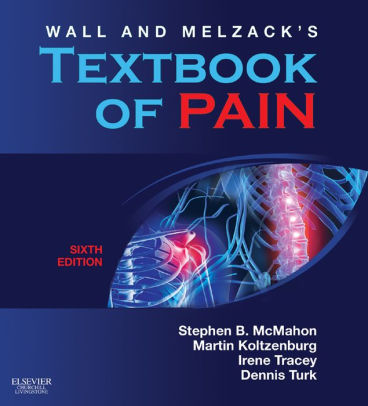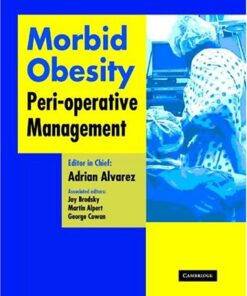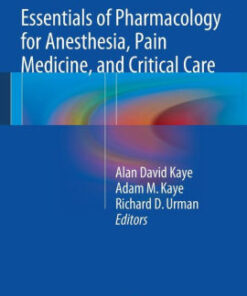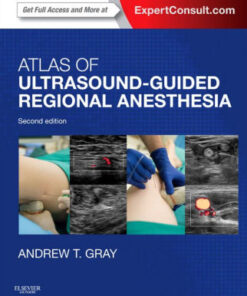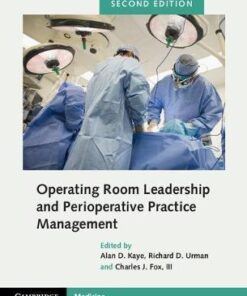(PDF) Wall & Melzack’s Textbook of Pain 6th Edition by Stephen B. McMahon
$18.00
Download instantly Wall & Melzack’s Textbook of Pain 6th Edition by Stephen B. McMahon, Martin Koltzenburg, Irene Tracey, Dennis Turk. It is ebook in PDF format.
ISBN-10: 0702040592 ISBN-13: 9780702040597
Preview
This is the PDF eBook version for Wall & Melzack’s Textbook of Pain 6th Edition by Stephen B. McMahon, Martin Koltzenburg, Irene Tracey, Dennis Turk
Table of Contents
Section I: Neurobiology of Pain
1 Peripheral Mechanisms of Cutaneous Nociception
2 Molecular Biology of Sensory Transduction
3 Inflammatory Mediators and Modulators of Pain
4 Microglia: Critical Mediators of Pain Hypersensitivity after Peripheral Nerve Injury
5 Neuroanatomical Substrates of Spinal Nociception
6 Spinal Cord Plasticity and Pain
7 Representation of Pain in the Brain
8 Central Nervous System Mechanisms of Pain Modulation
9 Development of Pain Pathways and Mechanisms
10 Genetics of Pain
11 Animal Models of Pain
12 Ascending Projection Systems
13 Autonomic, Endocrine, and Immune Interactions in Acute and Chronic Pain
14 Itch
Section II: Assessment and Psychology of Pain
15 Gender Differences in Pain and Its Relief
16 Epidemiology of Pain
17 Emotion, Motivation, and Pain
18 Cognitive and Learning Aspects
19 Psychiatric Pain-Associated Co-morbidities
20 Studies of Pain in Human Subjects
21 Pain Measurement in Adult Patients
22 Pain in Older Persons
23 Measurement and Assessment in Pediatric Pain
24 Assessment of Pain Beliefs, Coping and Function
25 Hypnotic Analgesia
26 Pain, Opiates, and Addiction
27 Placebo Analgesia
Section III: Pharmacology and Treatment of Pain
28 Spinal Pharmacology of Nociceptive Transmission
29 Methods of Therapeutic Trials
30 Opioids: Basic Mechanisms
31 Opioids: Clinical Use
32 Cyclooxygenase Inhibitors: Basic Aspects
33 Cyclooxygenase Inhibitors: Clinical Use
34 Antidepressants Analgesics
35 Mechanism of Action of Anticonvulsants as Analgesic Drugs
36 Anticonvulsants: Clinical
37 Local Anaesthetic Blocks and Epidurals
38 Cannabinoids
39 Analgesic Drugs in Development
40 Neurosurgical Approaches to the Treatment of Pain
41 Spinal Cord and Brain Stimulation
42 The Cognitive-Behavioral Approach to Pain Management
43 A Critical Appraisal of Complementary and Alternative Medicine
Section IV: Clinical States: Deep Somatic Tissue
44 Joint Pain: Basic Mechanisms
45 Basic Mechanisms of Muscle Pain
46 Postoperative Pain and Its Management
47 Osteoarthritis and Rheumatoid Arthritis
48 Fibromyalgia Syndrome and Myofascial Pain Syndrome
49 Low Back Pain
50 Non-Specific Arm Pain
Section V: Clinical States/Viscera
51 Visceral Pain: Basic Mechanisms
52 Thoracic Pain
53 A Clinical Perspective on Abdominal Pain
54 Genitourinary Pain
55 Obstetric Pain
Section VI: Clinical States/Headache and Facial Pain
56 Trigeminal Mechanisms of Nociception
57 Acute and Chronic Orofacial and Dental Pain
58 Migraine and the Trigeminal Autonomic Cephalalgias
59 Tension-Type Headache
60 Pain in and around the Eye
Section VII: Clinical States/Neuropathic Pain
61 Neuropathic Pain: Pathophysiological Response of Nerves to Injury
62 Animal Models of Experimental Neuropathic Pain
63 Central Consequences of Peripheral Nerve Damage
64 Phantom Limb
65 Painful Peripheral Neuropathies
66 Trigeminal and Glossopharyngeal Neuralgia
67 Complex Regional Pain Syndromes
68 Pain Following Spinal Cord Injury
69 Central Pain
70 Pharmacological Therapy of Neuropathic Pain
71 Surgery for Back and Neck Pain (Including Radiculopathies)
Section VIII: Clinical States/Cancer Pain
72 Cancer Pain: Causes, Consequences, and Therapeutic Opportunities
73 Cancer Pain Assessment and Syndromes
74 Analgesic Therapy and Palliative Care in Children
75 Cancer Pain: Treatment Overview
76 Pain Control in the Care of the Dying
